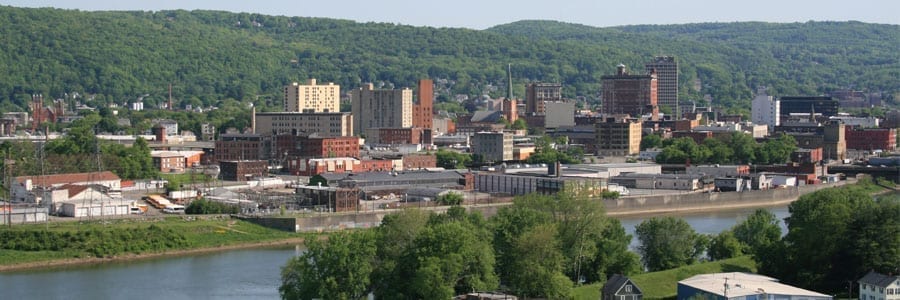The New York Department of Health– Bureau of Public Water Supply Protection conducts periodic water safety tests on all of the state’s water supplies. The government makes this data public.
Although federal agencies enforce drinking water safety standards, some contaminant levels allowed by law exceed recommended health guidelines. Other chemicals are entirely unregulated. These are allowed in any amount.
In tests conducted from 2004 two 2009 for the city of Binghamton, New York, 13 chemicals were routinely found to exceed guidelines established by health professionals. The national average is four. This raises serious health concerns for water department customers.
These contaminants can preexist in the water supply, be added to the water supply at the water treatment plant, or find their ways into the water through faulty distribution pipes.
This report summarizes these 13 chemicals. It will detail where these chemicals originate and their associated health risks.
1-3. Bromodichloromethane, Dichloroacetic Acid, and Total Haloacetic Acids
These are disinfection byproducts. Most often, they form when chlorine or chloramine used by a water treatment plant reacts with organic or inorganic material preexisting in the water.
The most common health risk associated with these chemicals is an increased risk of cancer.
These chemicals appear in every water test done between the years 2004 and 2009.
4-7. Chloroform, Dibromochloromethane, Bromoform, and Total Trihalomethanes
Chloroform and total trihalomethanes are also byproducts resulting from chlorine and chloramine use.
Potential long-term health effects include an increased risk of cancer and kidney, liver, or nervous system problems.
The overall levels of bromoform generally test within recommended health guidelines. Occasionally, however, they can pose risks.
The rest of these contaminants are all found that consistently high and unhealthy levels in the city’s drinking water.
8. Trichloroethylene
This chemical is used in the production of some textiles and to remove grease from metal. Its source is rubber processing and metal finishing industries; various other companies also use it as a degreaser.
An increased risk of cancer and liver problems can result from its presence in the water supply.
This chemical poses a periodic problem.
9. Arsenic
Arsenic comes from a large variety of sources. Pesticides and wood preservatives use it as an ingredient. Waste from electronic and glass processing plants are another cause. Rainwater can produce runoff from mining operations and natural mineral deposits.
Possibilities of health threats include circulatory problems, skin damage, and an increase in the risk of cancer.
While not often detected, arsenic is still a concern.
10. Alpha particles
Alpha particles can be generated from mining waste or naturally occurring sources.
They made emit a form of radiation, causing an increased risk of cancer.
Tests have detected these particles in excess only once during the six-year period under examination.
11-13. Radium (three different forms)
Radium is another radioactive material. It is an element produced by naturally occurring uranium deposits.
The potential health risk is increased cancer.
Radium occurred and one-third of tests conducted in the last three years of the study.
Conclusion
Many undesirable contaminants remain in drinking water that comes out of your kitchen faucet. While government regulations and procedures attempt to control these chemicals, it is extremely difficult to eliminate the problem on such a large scale.
One potential remedy for this problem is to drink bottled water. However, tests have shown that bottled water is often not much better than the tap water you delivered to your home. Buying bottled water also becomes tremendously expensive.
A better solution is to purchase a water purification system. This would eliminate virtually all contaminants contained in your water. Your family will be safe from health risks associated with drinking public water.
To learn more about water purification systems, it’s necessary to talk to a professional. Auchinachie Plumbing and Heating has been doing business in New York for over one century. Their Binghamton clean water experts can recommend a high-quality solution to meet your needs. Call Auchinachie Plumbing and Heating today for a free consultation.

